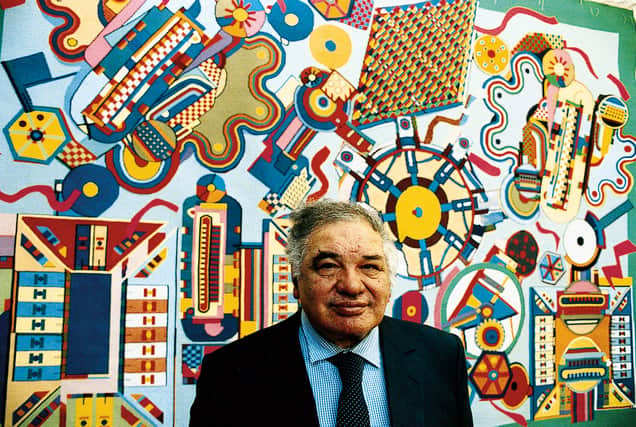Eduardo Paolozzi: A Scottish artist with a love of colour


Eduardo Luigi Paolozzi was one of the most influential Scottish artists of the 20th century. His early works helped spark the pop art movement and his sculptures are found in prominent locations across Britain.
His career as a teacher and artist spanned several decades of change and innovation and he continued to push boundaries in his own work until his death in 2005.
Advertisement
Hide AdAdvertisement
Hide AdPaolozzi was born in Leith in 1924 to Italian immigrant parents. His father owned an ice cream shop in the port district and money was in short supply.The family was shattered when Italy declared war on Britain in June 1940 and the future artist was interned for three months at Edinburgh's Saughton jail. During his time in prison, Paolozzi's father, grandfather and uncle were transported to Canada. Tragically, the ship carrying them to Canada was sunk by a German U-boat. The Paolozzis were among some 446 Italians who drowned. This harrowing experience made Paolozzi contemptuous of politicians for the rest of his life.But his wartime troubles were not yet over. He was conscripted in 1943 and spent over twelve months with the Pioneer Corp. In order to escape his conscription, Paolozzi feigned madness, and began to pursue his ultimate goal of being an artist. He studied at Edinburgh College of Art before moving to London to take up a place at the Slade school and later St Martin's.Paolozzi moved to Paris in 1947, where he met several great artists who would influence his later work including Alberto Giacometti, Jean Arp, Constantin Brâncuşi. Georges Braque, and Fernand Léger. During his stay in France, Paolozzi would collect magazines from American soldiers, from which he made collages, including the famous I Was A Rich Man's Plaything.Paolozzi relocated to Chelsea and established a studio. During the 1960s Paolozzi's new favourite material for sculpture was aluminium, which he drilled and bolted together to create angular, humanoid forms. He collaborated with engineering companies, providing him with materials, equipment, and places in which to work.In the 1970s, Paolozzi's focus switched to silkscreen printing and relief, creating abstract images in monochromatic colour schemes. During this decade, he made a series of ceiling panels for Cleish Castle in Kinross-shire – one of his best known works. In 1979 his talent was recognised by the Royal Academy.The 1980s and 1990s were a time of great activity. The Scot completed numerous public commissions and won several honours for his work. Among his best known works of this period is the statue of Sir Isaac Newton which stands in the British Library, and the murals at Tottenham Court Road tube station in central London. In 1986, he was appointed Her Majesty's Sculptor in Ordinary for Scotland and was knighted three years later.Paolozzi was greatly concerned about his legacy as an artist and gave the Scottish National Gallery of Modern Art a large number of his works, as well as the contents of his studio. Many of his works are still on display at the Dean Gallery. The artist suffered a near-fatal stroke in 2001, and died in April 2005. Toby Treves, a trustee of the Paolozzi Foundation, which the artist set up in 1994, said: “Eduardo Paolozzi was one of the most important British artists of the late 20th century, whose art captured the breadth of the modern world.